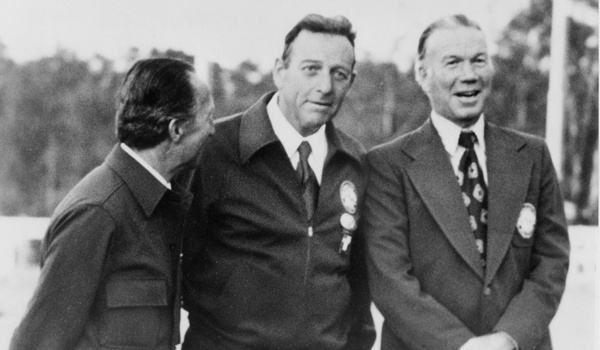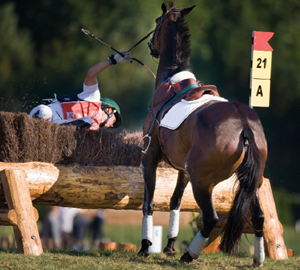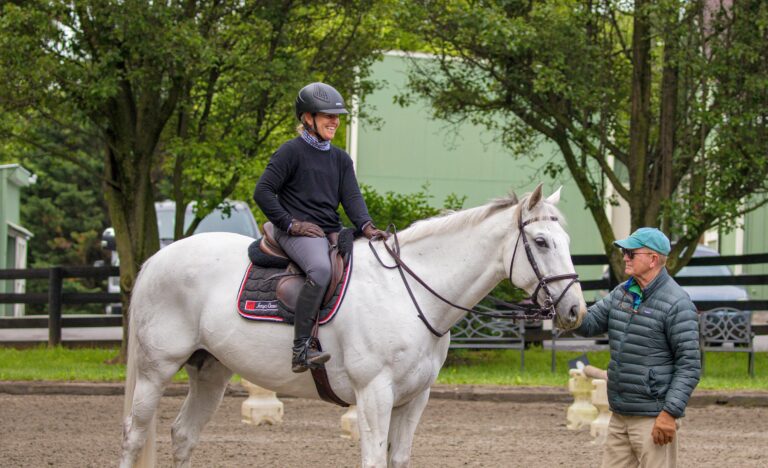Great coaches in every sport are surprisingly similar because they deal with the same problems. I study the techniques of successful coaches in other sports because I am looking for some slight improvement that I can apply to my own coaching. One of the most successful coaches in professional sport was the late Vince Lombardi, legendary coach of the National Football League’s Green Bay Packers from 1959 to 1967. His techniques and explanations resonate across the boundaries of sports and years. At the start of every season, he would address his team of seasoned professional athletes with perhaps his most famous quote: “Gentlemen, this is a football.” Lombardi was never afraid of returning to the basics. His point was that winning performances are based on the correct execution of the fundamentals of his sport. Asked once what the secret of his success was, he replied, “It’s very simple. I teach my men to block and tackle.” His insistence on the correct execution of fundamentals was the hallmark of his coaching style.

No Detail Is Insignificant
Coach Lombardi was not unique in his beliefs. Coach John Wooden, best known for his unprecedented success coaching the UCLA men’s basketball team, shared Lombardi’s beliefs and applied them. He was probably the most successful college basketball coach in history, winning 10 NCAA championships from 1964 to 1975, seven of them consecutively. Coach Wooden knew how to coach winners. He did it the same way that Coach Lombardi did, by insisting that his athletes learn and perfect the basics of his sport.
Coach Wooden would spend the first practice of every season teaching his players how to tie their shoes correctly. (Talk about coaching where the rubber meets the road!) I was taken aback when I first heard of this but quickly saw what Coach Wooden was actually saying to his team: No detail is insignificant, if you want to be a success.
The golden period of the U.S. Equestrian Team featured two coaches who could match Lombardi’s or Wooden’s successes—Bert de Némethy, our show-jumping coach from 1955 to 1980, and Jack Le Goff, coach of the eventing team from 1970 to 1984. (We were robbed of equal success in dressage by the untimely loss of USET dressage coach Bengt Ljungquist in 1979.) Their results were not based on bits, gadgets or trendy techniques but rather on the correct application of basic principles of riding and training horses.
Practicing Perfectly
Regardless of the sport in question, we see the same qualities lead to success: the application of basic principles, attention to detail and a belief that practice doesn’t make perfect—perfect practice makes perfect.
University of Alabama football coach Nick Saban is one of the most successful coaches in history. He teaches his athletes to ignore the scoreboard and concentrate on making the next play as perfect as possible. Saban would probably approve of one of my favorite quotes from Bert de Némethy that “a good feeling after the round is better than any ribbon.” These are two fantastically successful coaches in two very different sports, yet they share the same relentless drive toward perfection in every aspect of their chosen field of endeavor.
We need to study coaches in our sport like de Némethy and Le Goff because of their spectacular results and the riders that their programs produced—show-jumping riders like Bill Steinkraus, Frank Chapot and George Morris, or eventers like Mike Plumb, Bruce Davidson and David O’Connor. While not all of us are going to match those gold-medal-winning records, we can all imitate their attitudes and study their beliefs. It is clear that the product of great coaching is a great athlete.
Coach to the Sport’s Requirements
The attitude that nothing should be left to chance has become even more important for eventing coaches with the change from the Classic to the short format in the last 10 years. The scoring ratio of the three tests used to be 3:12:2, meaning three parts dressage, 12 parts cross country and two parts show jumping. This explains the historical emphasis on speed across country because the majority of the competition was won or lost in that phase. Modern short format competitions are scored on a 1.5:1:1 ratio, meaning that dressage is slightly more important than cross country or show jumping.
Every change in the scoring parameters of any sport requires a corresponding adjustment by its coaches and athletes. We can see that the result of eventing coaches’ adjustment to the short format’s increased emphasis on dressage and show jumping has been to raise riders’ technical proficiency to new and admirable levels. The average dressage test in this country is steadily improving, and the show-jumping test is far more demanding than what was formerly required by the Classic format—yet most competitors now jump the stadium phase with ease.
Change, however, is not always beneficial. In gaining proficiency in some aspects of eventing, we have lost it in others. This loss became apparent to me recently while watching horses compete at the middle and upper levels. Many horses are no longer as fit as eventers in this country used to be. This causes them to run out or refuse obstacles that they handle easily when they are schooling or when they are still fresh. A lack of conditioning expertise is bad news for us because the middle and upper levels of eventing are still serious tests of cardiovascular capacity. Coaches and riders must take this into account in their preparation.
Coach to Our Current Horses’ Needs
Conditioning is even more important when one considers that in eventing the emphasis on dressage and show jumping has led to an increased use of warmbloods, rather than the Thoroughbreds that were historically selected for the Classic format. The most recent statistics I saw on event-horse breeding showed that successful four-star horses are approximately 72 percent Thoroughbred. We are now using horses who have the movement needed for success in the dressage arena and that have been bred for jumping power. They lack, however, the Thoroughbred’s natural cardiovascular capacity, and they do not instinctively know how to gallop.
Once we identify the change in the type of horse we are selecting for eventing, we must make the necessary adjustment in our training techniques. Coaches must learn to prepare the cross-country phase as carefully as they have recently begun to prepare the dressage and show-jumping phases.
For example, if a horse has ever been in peak condition, it is easier to get him fit again. Most Thoroughbreds come into eventing after some sort of career at the racetrack. Regaining the fitness needed for eventing comes easily to them. The hardest training problem with Thoroughbreds is to teach them to relax during the dressage and show-jumping phases. On the other hand, warmbloods naturally excel at dressage and show jumping but must be trained to gallop, and great care must be taken with the development of their cardiovascular capacities.
It is obvious to me that many horses at the upper levels of eventing today are quite capable, but their lack of condition causes things to go wrong for them on cross country. Coach Lombardi used to say, “Fatigue makes cowards of us all.” If he were standing with me last fall watching cross-country competitions, he would understand what he was watching. Tired horses make mistakes on course, just as tired athletes make mistakes during a game that they would not make when they are fresh.

Wanted: ‘Riding-at-Speed’ Specialists
One effect of the short format has been to force event coaching to evolve. Most programs now have specialist coaches to train horses and riders in the technical phases. This is necessary and is part of the reason for the increased proficiency we see our competitors display in the dressage and show-jumping arenas. One of the many roles of the event coach is to be able to recognize the interaction of the three parts of the sport and to keep them in balance. For example, improved dressage will usually lead to improved show jumping. Improved show jumping will increase the horse’s confidence, which can lead to more confident cross-country performances, and so on. To ensure success, the coach must give the same sort of attention to cross-country training and conditioning that is currently given to dressage and show jumping.
I wonder what changes we would see in our horses and riders if they were exposed to a world-class racehorse trainer such as Graham Motion or Jonathan Sheppard, both of whom have produced horses at peak fitness time after time. Think what we could learn from perennial champion steeplechase jockey A.P. McCoy, a man who has won more than 4,000 races. If we want to learn about riding at speed, we need to talk to people who have done it successfully.
If we want to be successful, we need to study successful coaches and riders—past and present—and emulate them. Each of the three parts of an event requires careful study and skillful preparation. If we continue to ignore part of the event, our results will continue to lag behind the rest of the world. There are lessons to be learned from other aspects of the horse world, if only we would seek them out.
This article originally appeared in the February 2014 issue of Practical Horseman magazine.










